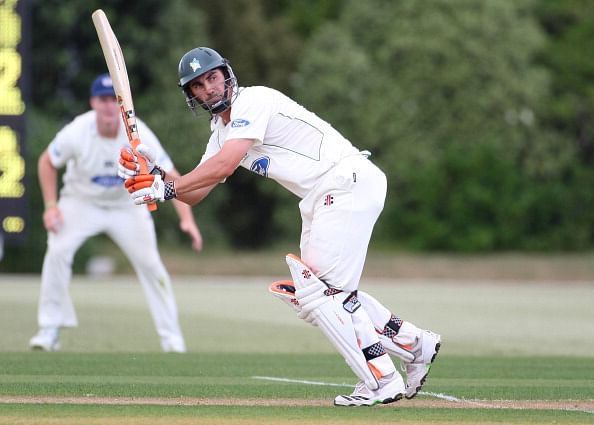
New Zealand's batsmen struggle in 'revolving door' policy
Ever since the retirement of legendary Martin Crowe, New Zealand have been hard-pressed to find world class batsmen. On numerous occasions, New Zealand’s batting line-up has capitulated like a pack of cards, resulting in heavy losses. Recently, against a hostile South African pace attack, New Zealand’s batsmen constantly floundered, and invariably found themselves in dire straits.
When we consider New Zealand as a country, we have to understand that they will always struggle to churn out world class cricketers day in and day out. A statistical count tells us, there are 11 sheep for every person in New Zealand, which means, there are approximately about 44 million sheep to 4.1 million people. It also has to be said that most of those 4.1 million people are hooked to another sport called rugby.
In-spite of severe limitations faced by New Zealand, there is an inkling that by pursuing a haphazard selection policy, the selectors have done more harm than good. A slew of young batsmen have come in and disappeared into oblivion. The likes of Sinclair, How, Vincent and Hamish Marshall showed flashes of brilliance, but just weren’t able to make it big at the international level.
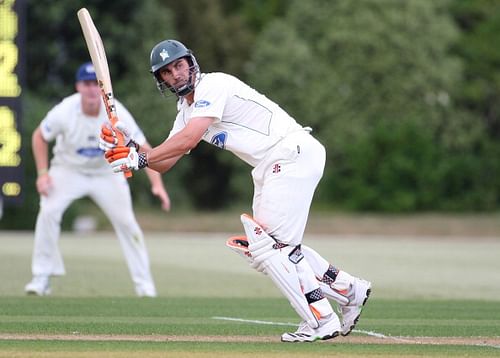
Mathew Sinclair
In fact, Mathew Sinclair arrived on the Test scene with a bang, as he made a swashbuckling double hundred against the West Indies in his debut Test in 99/00. He followed up that double hundred with a valiant century in a losing cause against the mighty South Africans at Port Elizabeth during the 2000/01 season. The opposition attack boasted of names like Donald, Pollock and Ntini in their ranks. Sinclair continued to churn out big scores, as he made a double century at home against Pakistan at Christchurch. It was a significant moment in Sinclair’s career, as after a succession of low scores, the selectors were ready to wield their axe, and drop him from the Test side.
Mathew Sinclair soon became a victim of New Zealand’s bizarre ‘revolving door’ policy. He was virtually on a perpetual trial. Sinclair was dropped from the team after not doing well in Australia and at home in 2001/02. Those were the days when the Australians were known as ‘invincibles’. So, it wasn’t a major surprise that “Skippy” flopped miserably Down Under.
In 03/04, in one of Sinclair’s comeback Tests, he made a well-measured 74 against South Africa. The gritty knock didn’t help him to be picked for the tour to Old Blighty. He must have been crestfallen, as despite doing well, he wasn’t selected. Sinclair even tried his hand at opening the batting in 04/05 in Bangladesh and in Australia, respectively. But as he wasn’t a regular opener, he struggled to make that chance count. The last time we saw Sinclair playing for New Zealand was in 09/10 against Australia. He seemed like a cricketer full of nerves and jittery thoughts. When you know your place is on the line, it is hard to hide the tension and play freely. No wonder, after failing in just one Test against Australia, he was dropped for the umpteenth time. A Test batting average of 32.05 doesn’t do justice to his potential. Even now, Mathew Sinclair continues to serve his first class team, the Central Districts, with dedication and devotion.

Lou Vincent
More than a decade ago, on a typical trampoline wicket at WACA, Lou Vincent made the entire cricketing world to sit up and take notice of his batting talents with a brilliant hundred against Australia. In 03/04, Lou Vincent also made a fine hundred on turning tracks of India. Since then, it was a case of never ending barren patch for Vincent. Constant chopping and changing didn’t help his cause either.
When Vincent announced his retirement this year, his Test average of 34.15 didn’t make for a good reading. Lou Vincent’s sparkling century at WACA in 01/02 even made the hard-nosed former Australian captain, Ian Chappell shower praises on him. Unfortunately, a combination of ‘revolving door’ policies, and maybe Vincent’s lack of Test match temperament meant that he lost the plot thereafter.
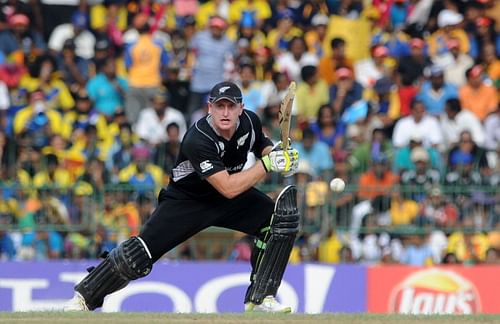
Scott Styris
In 99/00, when New Zealand’s ‘Postman’, Gavin Larsen bid goodbye to international cricket, Scott Styris came into the side as his replacement. During the early part of his career, he was known as a medium-pacer, who could bat at bit. As the years ticked by, Styris worked hard on his batting, and was duly rewarded with a spot in the Test side. He started his Test career on a bright note; making a Test century on debut against West Indies in the year 2002. Styris went on to make four more hundreds for New Zealand. The best of the lot being his match winning knock of 170 against the formidable South Africans in 03/04.
In spite of doing reasonably well in Tests, Styris gave an impression of a cricketer who preferred the shorter formats of the game. He eventually retired from Test cricket after a disastrous tour to South Africa in 07/08. Nowadays, he is plying his trade in T20 leagues that have mushroomed across the globe.
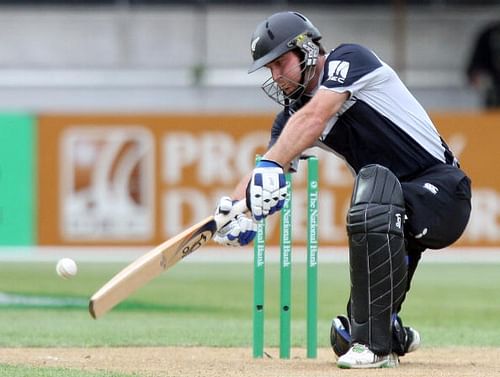
Jamie How
Jamie How made his Test debut back in ’06 against the Windies. But it was in 07/08, when he stamped his class in the international arena with a classy 92 against England at home. New Zealand went on to beat England in that Test match. During that time, How also made an enterprising hundred in a high scoring one-day game against England at Napier in New Zealand.
On a tour to England in ’08, How made an encouraging start by doing well in testing conditions at Lord’s and Old Trafford, respectively. After a string of low scores though, How was finally dropped in ’09. Since then, he hasn’t donned the black cap for New Zealand.
Hamish Marshall, the stylish middle-order batsman from Auckland had a promising start to his Test career. In just his second Test, he stood up to the might of all conquering Australians by making a hundred. He also played an eye-catching knock of 160 against the touring Sri Lankans at Napier in 2005.
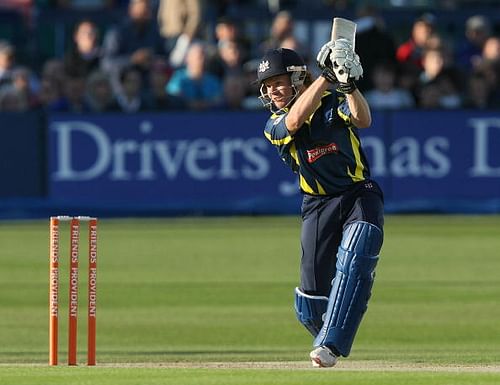
Hamish Marshall
After a frustrating time at the 2007 World Cup, Marshall got disillusioned with the system. In search of greener pastures, he turned down a central contract for the 2007/08 season, and joined Gloucestershire. A Test batting average of 38.45 suggests that he could have done well for New Zealand.
New Zealand’s growing list of under-performing batsmen also includes names like Shane Thompson, Bryan Young, Blair Hartland, Craig Cumming, Matthew Bell, Michael Papps, Gary Stead, Craig Spearman, James Marshall, Aaron Redmond, Peter Ingram, Tim McIntosh, Neil Broom, Peter Fulton, Daniel Flynn and Martin Guptill. It is sad but true that since the retirement of Martin Crowe, only Astle, Craig Mcmillan, Mark Richardson, Stephen Fleming and Ross Taylor have bucked the trend of sustained under-performance and done well.
Recently, Martin Crowe was vociferous and unsparing in his criticism of New Zealand’s cricket academy, as he believed, they were partly responsible for such sustained under-performance by the batsmen. Martin Crowe said, “Biomechanics became the new buzzword for New Zealand’s finest batting talent. The theory passed on was that hand speed and power efficiency through the shot was everything. Out the window went footwork, body position, soft hands and hitting the ball late below the eyes. In came heavier bats, high backlifts, minimal footwork and going hard at the ball.”
He said, “The net result was faster strike rates and shorter stays at the crease. For a whole decade, this theory was passed down to the next line of coaches, and from them to young players, who were too frightened to disregard the instructions thrust at them.”
As a keen cricket enthusiast, I do believe a combination of factors that includes bad coaching and ‘revolving door’ policies have hurt the prospects of New Zealand’s cricket in the last decade. For the Test series against England, New Zealand’s selectors have picked the “two metre” Fulton. Going by how New Zealand’s selectors operate, one can safely say that they will drop Fulton after one bad game. As a cricket fan, it is frustrating to see New Zealand adopt an ad-hoc approach to selection.
The Test series against England which starts tomorrow can be a stern Test for New Zealand’s batsmen. The likes of Anderson and Finn will explore every nook and cranny of their batsmen’s defence. From a New Zealand’s perspective, it is high time that selectors give everyone a decent run in the side. If a cricketer is assured of a fair run in the team, he can definitely concentrate on his job better, something New Zealand’s cricket board ought to learn as early as possible.